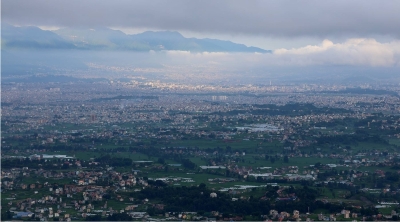Kenya pioneers ‘mobile money’ in Africa
Kikuyu, June 10:
Eyeing his cell phone with a mixture of suspicion and amazement, Paul Kangethe reads and rereads the text message he has just received.
“I’ve never seen anything like this before,” Kangethe says of the alert that instructs him to report to the nearest cell phone shop to retrieve money his brother-in-law sent him just moments ago.
Kangethe is one of more than 65,000 registered users of M-Pesa, a mobile money
transfer system recently introduced by Safaricom, Kenya’s leading mobile operator, that enables people with access to a cell phone to send and receive money over their handsets in an African first.
“When he used to send me money, he would send it through the post office and it could take up to three days to receive it,” Kangethe, 35, recalls, sitting in the shade of a kiosk in Kikuyu town, 20 kilometres outside of Nairobi.
From dating services to stock market listings, mobile phones are changing the face of Kenya and this service is forcing banks to re-evaluate their approach to inhabitants of traditionally overlooked rural areas.
More than 60 per cent of Kenyans have access to banks or microfinance institutions, but a staggering 38 per cent — mostly living in rural areas — are entirely unbanked, according to data collected by Financial Sector Deepening Kenya (FSDK).
However, more than half the population either owns or has access to a mobile phone, generating a new means by which banking and financial services could be provided, according to Safaricom’s Chief Financial Officer Les Baillie.
“By providing this service, we’re, in a sense, bringing banking to the unbanked,” Baillie told AFP.
M-Pesa users can send up to 35,000 Kenyan Shillings (525 dollars, 390 euros) per transaction and keep up to 50,000 Kenyan Shillings in a “virtual account” for later use.
To use the service, senders hand over funds to a Safaricom shop to be converted nto “mobile money” that is “transferred” by text to the recipient, who then withdraws it as cash at another Safaricom shop.
The fees for sending and withdrawing run up to 170 shillings (2.55 dollars, 1.89 euros), a mere fraction of the cost charged by other money transfer agencies, which ask for up to 10 per cent of the amount being sent.
Even before the advent of M-Pesa, traditional service providers — such as banks, Western Union or the Kenyan postal corporation’s homegrown Postbank — were often shrugged off in favour of cheaper, informal means.
“The majority of people in Kenya, 86 per cent, either send money through friends and family or on buses or matatus (minibuses),” explains Caroline Pulver of FSDK, a World Bank sponsored programme attempting to broaden access to the formal financial sector. “The problem with that, however, is that it’s not very secure,” she added.
M-Pesa has proved popular not just for the security it guarantees in delivering money quickly and efficiently — users are asked for a secret code to withdraw funds — but also for its simplicity, which is drawing converts from those who formerly relied on regulated banks.





